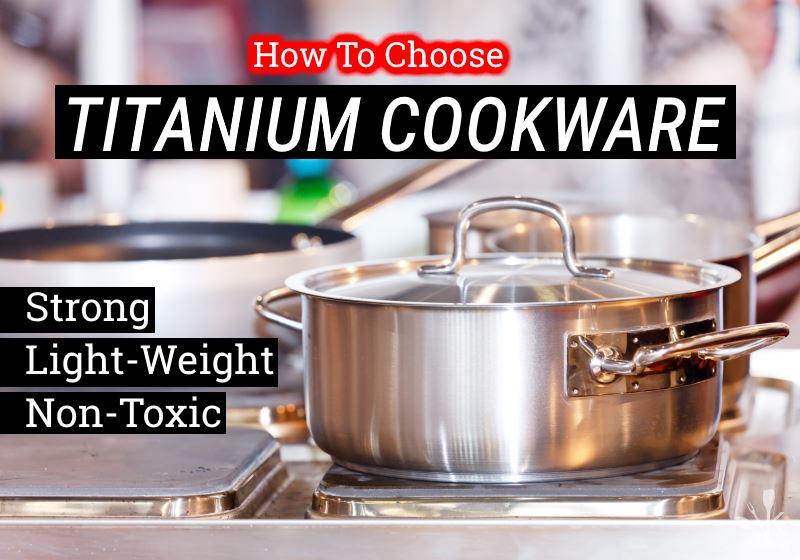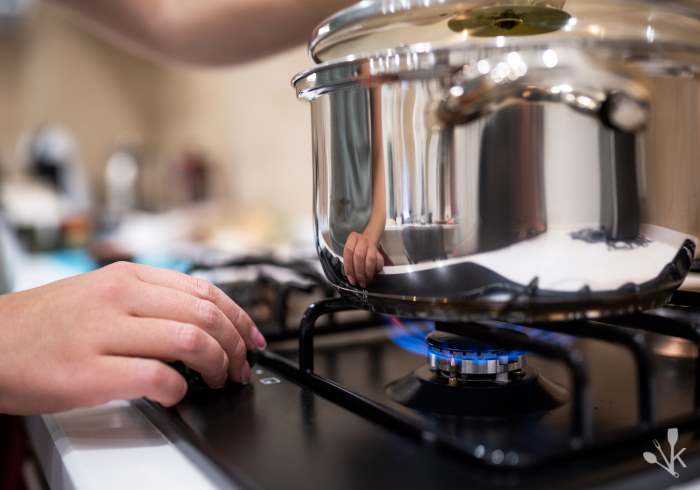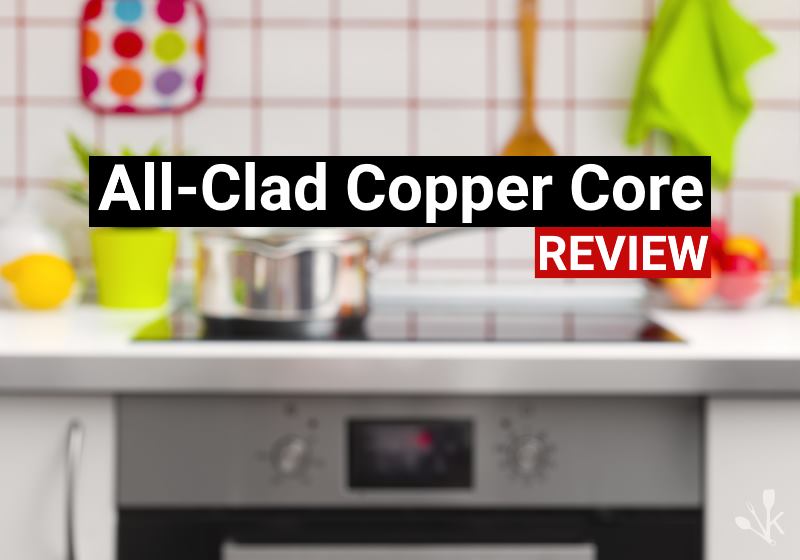Being able to place a pan in the oven makes life so much easier. If you’re like me, you have one or more pans you use in the oven and on the stove. But are such cooking habits safe?
Most cookware is oven safe to a certain extent. However, it’s not a good idea to assume that your favorite pan is oven safe.

Can you put a skillet in the oven? The answer:
You can put a pan in the oven, but not all types of frying pans or skillets are oven safe! Handles and lids are often not oven-proof. Check your product for an oven-safe label or with the manufacturer to prevent your pan from melting, catching fire, or breaking down and leeching toxic fumes into your food.
You must consider your pans construction material, build quality, and heat-resistance limitations. In this guide, we hope to provide a means and help ensure that you don’t ruin your favorite pan.
How To Tell If A Pan Is Oven Safe
The packaging you bought your pots and pans should include its cooking surface compatibilities and temperature limits. Sometimes labels will be printed into the handle or the bottom of your pan.
Suppose you plan to use an old pan in the oven for the first time. In that case, you must look up its make and model on the manufacturer’s website even if it doesn’t have plastic handles or a glass lid.
When in doubt, do not put your frying pan in the oven!
Not all cookware materials can handle up to 500 degrees (500 F) of heat (think of your favorite pan with a non-stick coating).
If you are unable to determine it based on that information, you might consider our guidelines below. These are not absolute rules, and not all pans are created equal. We’ll cover more about that, lids, and handles in the next sections below.
Can You Put A Cast Iron Skillet In The Oven?
Cast iron is a tough metal compound. It’s made of mostly iron with 2 percent to 4 percent carbon and other trace minerals, like silicon, phosphorous, and sulfur.
This material makeup makes cast iron’s heat resistance much higher than any oven can reach. Cast iron is fabricated during the manufacturing process at extremely high temperatures. During welding, a critical temperature that may initiate particle breakdown is 1400 degrees Fahrenheit.
While a cast iron pan is considered oven-safe cookware, you do need to determine if it’s seasoned and whether it’s enameled or not.
Cast iron seasoning consists of pork fat or oil, which will break down much faster than the cast iron itself. So, if you want to preserve your seasoning, try not to exceed 375 degrees Fahrenheit. If you are just fine with having to season your cast iron again, then go ahead and bake away.
An enameled cast-iron skillet is usually safe up to 500 degrees Fahrenheit.
Can Stainless Steel Pans Go In The Oven?
We all know steel is a hard, durable metal that won’t break. To understand the resistance properties of stainless steel, it’s worth understanding this metal alloy’s components.
We begin with its main component, which is steel. It consists of 98 to 99 percent iron. Steel also contains up to 2 percent carbon. Any steel alloy that has just a tad bit more than 2 percent of carbon would actually be classified as cast iron.
The stainless-steel alloy includes between 10 percent and 30 percent chromium. This, as well as a little bit of nickel, gives it the infamous stainless quality. It’s also responsible for its heat resistance.
Based on a temperature scale, the most common type of stainless steel used in cookware (type 304) can withstand extremely high temperatures: 870°C (1598°F) intermittently and 925°C (1697°F) continuously.
As you can see, household oven temperatures should not be able to destroy your stainless-steel cookware. Of course, we don’t recommend anything above 450 degrees to help prevent warping or discoloring.
Unfortunately, not all stainless-steel cookware sets are created equal, and depending on manufacturing processes, your cookware may warp or discolor at higher temperatures.
If you need to be certain, check your manufacturer’s guide to determine the type of stainless steel you have and whether oven use is recommended.
Can You Put Aluminum Pans In The Oven?
When most of us think of durable cookware, the first things that come to mind are cast iron pans or stainless steel. I bet you didn’t know that aluminum has a much higher heat conductivity than iron, carbon steel, and stainless steel.
Related | Best Carbon Steel Pans
The type of aluminum often used in cookware is 3003, which is pretty strong and resistant to corrosion. It usually contains over 98 percent aluminum with some copper and manganese.
Aluminum’s melting point is 1221°F, so you’d have to try hard to damage it in a household oven. Of course, most manufacturers will only recommend oven temperatures up to 500 F.
However, you’re more likely to have a nonstick pan with an aluminum base, which we’ll discuss in the next section.
Can Nonstick Pans Go In The Oven?
Most non stick pans have an aluminum base with a coated layer that gives it its nonstick properties.
But it would be best if you considered the handle. Some handles are made of ergonomic or cooling materials, which are not oven-safe.
Materials used for plastic handles include silicone and traditional rubber. Silicone is resistant up to about 575°F, while natural rubber withstands up to 180°F. Often those figures must be reduced to prevent damage or degradation.
We don’t feel comfortable using ceramic coated pans or TEFLON pans at high temperatures for fear of destroying the handle, non stick coating, warping, or burning the pan.
Both types are pretty heat resistant as far as cooking goes. However, each item varies from manufacturer to manufacturer. Be sure to check your owner’s manual before you place them in the oven.
Can Glass Lids For Pans Go In The Oven?
As you may know, some cookware sets come with tempered glass lids or a combination of materials. I usually avoid placing glass lids in the oven. The idea of glass (unless it’s a bakeware pan) doesn’t sit well with me in the oven.
However, according to the glass experts, tempered glass (which is toughened to be more thermal resistant) can withstand temperatures up to 450°F.
Final Thoughts – Pans That Can Go In The Oven
Many types of pans are oven safe, but there’s a lot to consider before putting them in your oven. While not all types of cookware material will shatter, melt, or catch fire, they can still break down and leech toxic substances into your healthy food.
Handles and lids are among the most significant concerns, so stainless steel and cast iron skillets are usually a safe bet for finishing your cooking in the oven.
Fortunately, different types of pans can be placed in the oven with a little mindfulness. Your next step, figuring out what to cook!











